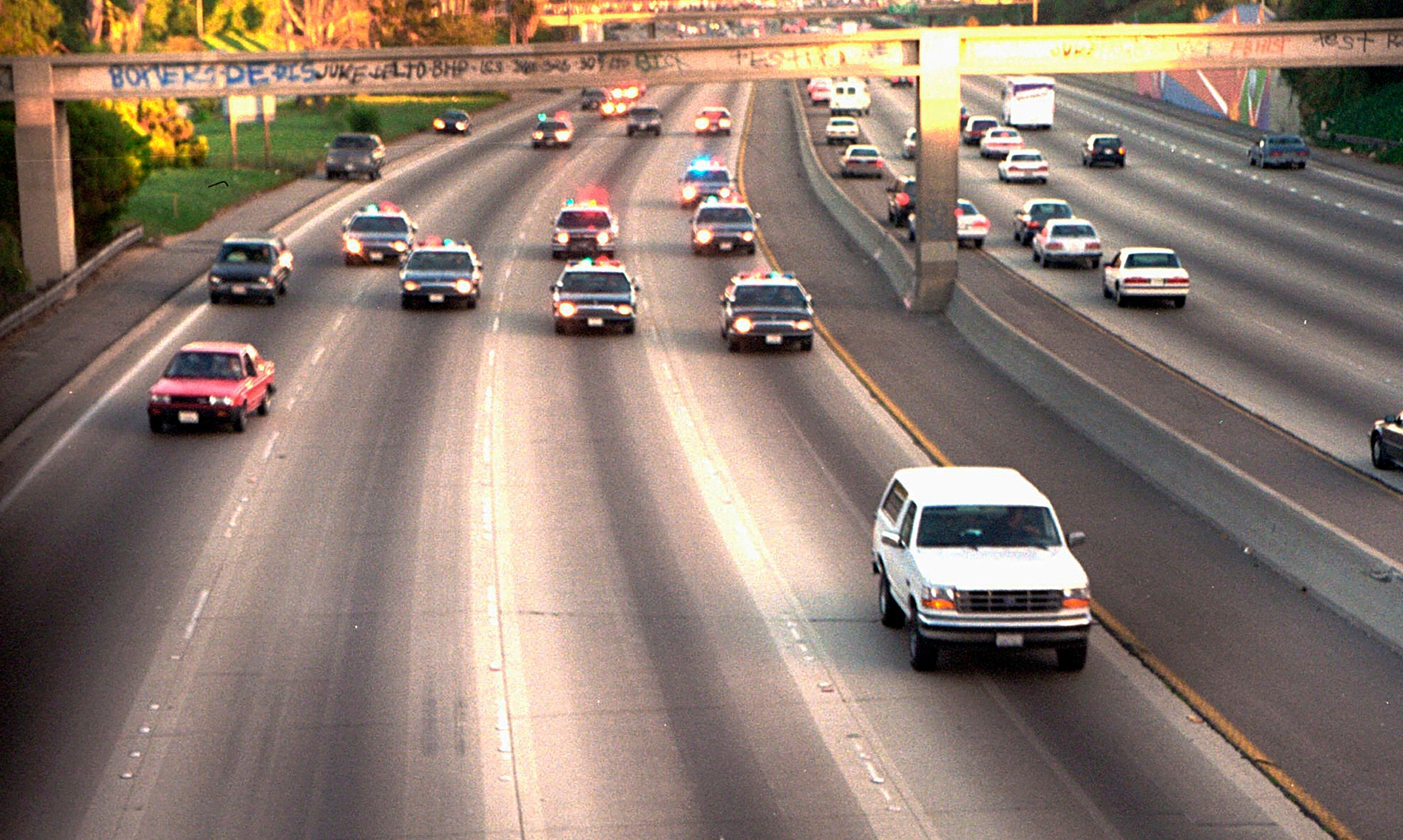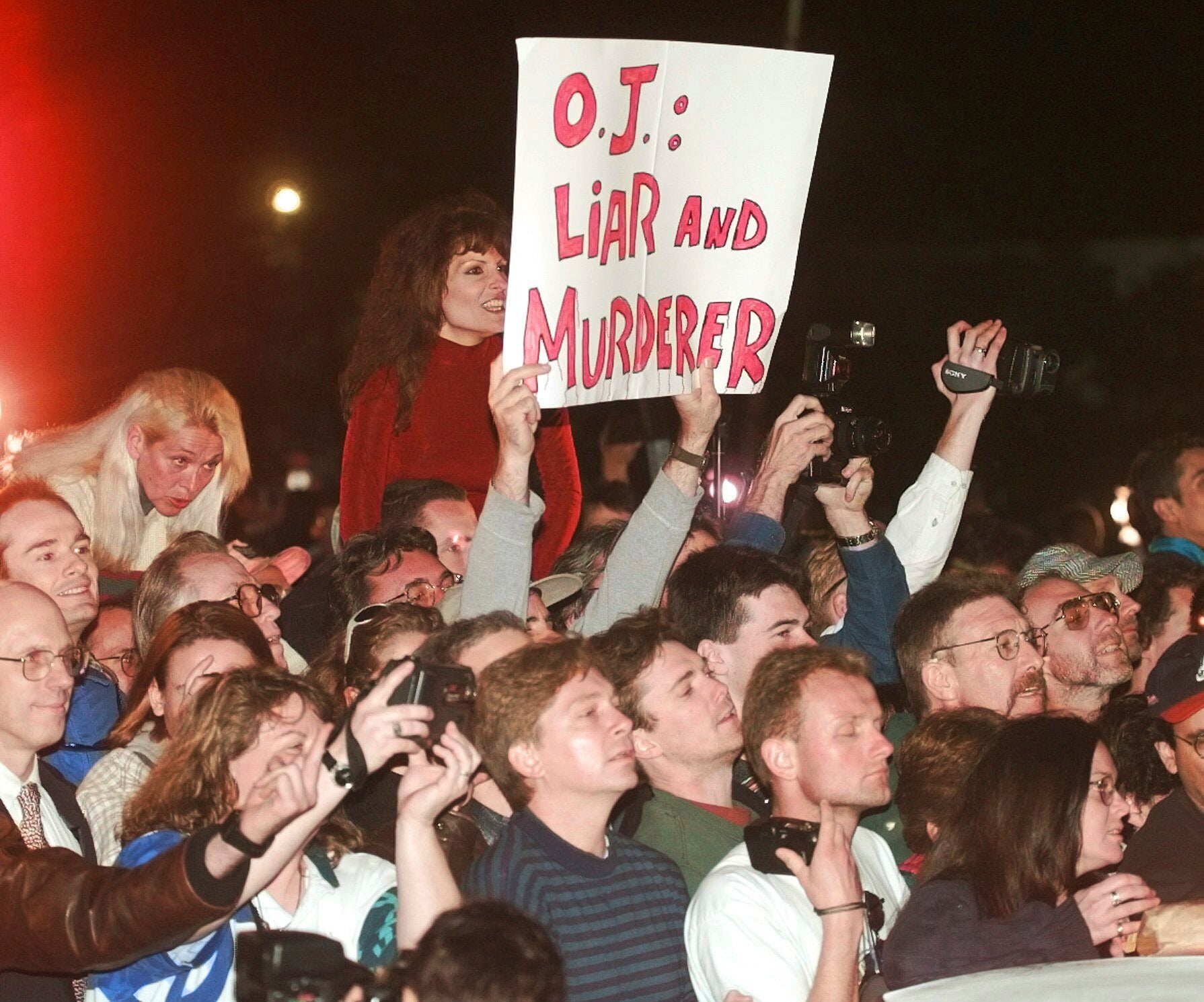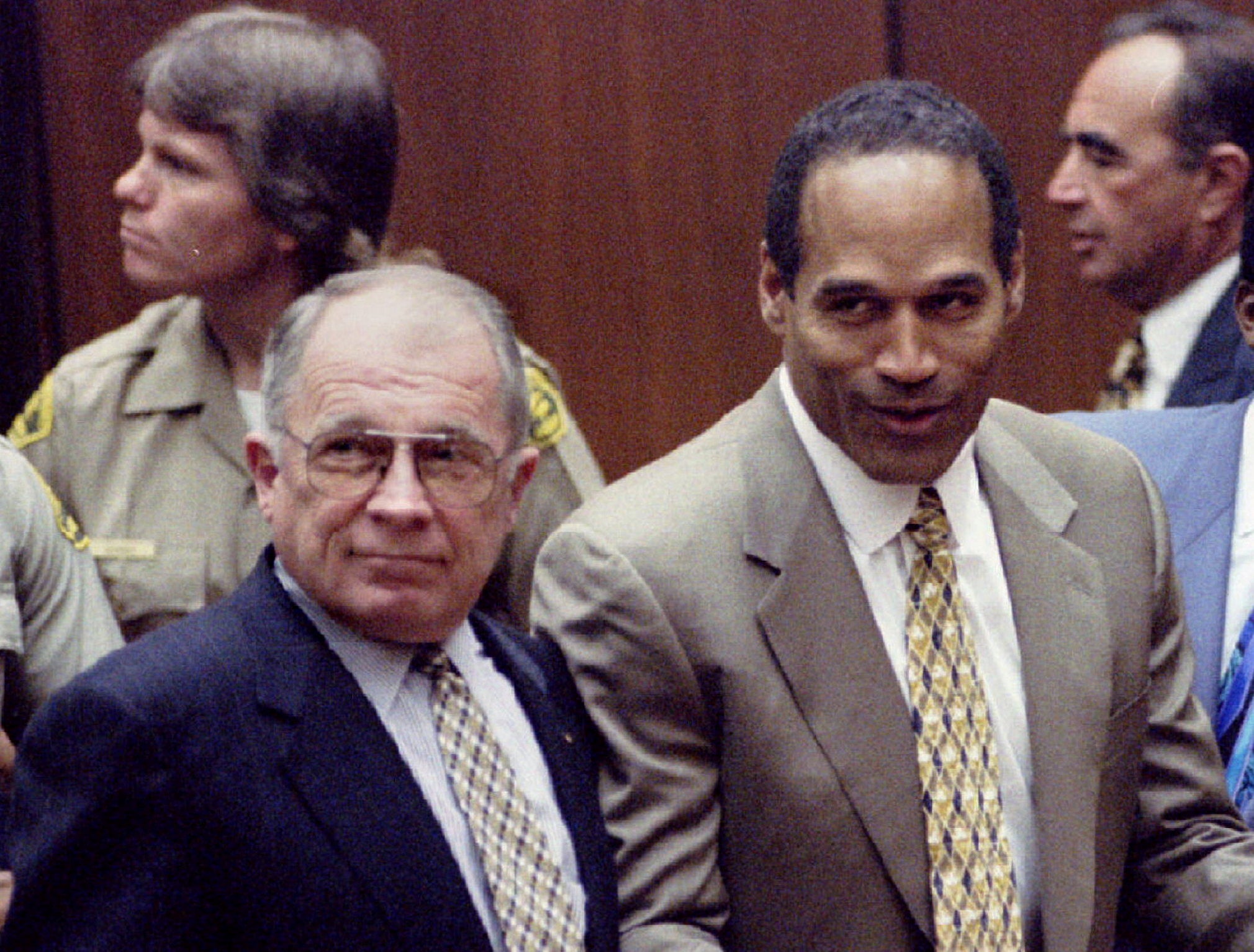OJ Simpson got into a White Bronco 30 years ago today. It was then a police chase that captivated the nation
More people watched fallen football star’s attempted getaway along the city streets and freeways of Los Angeles on TV on June 17, 1994, than saw that year’s Super-Bowl
Thirty years ago today, OJ Simpson sat in the back of a White Ford Bronco that led police on a slow-moving chase throughout Los Angeles as authorities were set to charge the football star for murder. It’s a moment few Americans forget, even three decades later.
An estimated 95 million Americans watched the chase on TV on June 17, 1994, to Simpson in the 90-minute-long pursuit. He was wanted in connection to the murder of his ex-wife Nicole Brown Simpson and her friend Ron Goldman and ordered to surrender.
“People … didn’t know what was going to happen next,” journalist Zoey Tur, who broadcast the low-speed chase from a helicopter KCBS told Yahoo! “They couldn’t take their eyes off of it.”

Simpson, who died from prostate cancer on April 10 at age 76, was not actually driving the vehicle – his friend Al “AC” Cowlings was behind the wheel – but was sat in the back seat holding a gun to his temple, seemingly close to ending his life.
The Associated Press remembered the extraordinary event in response to Simpson’s death, writing: “The freeway was like a parade – with the police, media and fans following ‘The Juice’. There were crowds on the overpasses, signs, cheers and fists punching the air as the pursuit unfolded.”
The LAPD had notified Simpson’s lawyer Robert Shapiro at 8.30am that morning that it planned to charge their client with first-degree murder over the killings of Brown Simpson and Goldman.
Simpson initially said he was willing to comply, with the police agreeing not to arrest him until noon to allow him to see a mental health specialist amid concerns that he was suffering from suicidal depression. He had also written a suicide note.
“I’ve had a great life, great friends,” that last letter turned out to say. “Please think of the real OJ and not this lost person.”
When Simpson was subsequently found to have reneged and disappeared, the LAPD declared him a fugitive and issued an all-points bulletin and an arrest warrant.

As TV news helicopters scanned the LA highways looking for Cowling’s Bronco – correctly assumed to be the escape vehicle – Simpson reportedly called 911 and was traced to the Santa Ana freeway at 5.51pm.
By 6.45pm, police officer Ruth Dixon had spotted the Bronco on Interstate 405 heading north, making contact with Cowling, who apprised her of the situation. She held back, pursuing the vehicle at around 35 miles per hour and was soon joined by a further 20 police cars on its tail.
Inside the SUV, friends of Simpson pleaded with him to pull over via KNX-AM, the radio station blaring out from the stereo, whose sports broadcaster, Pete Arboghast, succeeded in connecting Simpson with his old football coach John McKay by mobile, the latter likewise urging his former player to turn himself in during an emotional call.
Detective Tom Lange, who had interviewed Simson about the murders, also managed to get through by phone and implored him to throw his gun out of the Bronco’s window for the sake of his loved ones.
With Americans gathering around television sets everywhere to watch the chase unfold, some took to the streets of Los Angeles bearing hastily made signs that read “Run, OJ, Run!”, “Save The Juice” and “We love The Juice”. The chase was broadcast across TVs with NBC famously airing it side-by-side with Game 5 of the 1994 NBA Finals.
More people watched fallen football star’s attempted getaway along the city streets and freeways of Los Angeles on TV on June 17, 1994, than saw that year’s Super-Bowl
The 60-mile chase finally ended at 8.00pm when the Bronco pulled in at Simpson’s Brentwood estate, where his son, Jason, ran out of the house to embrace him and 27 SWAT team officers stood waiting.

Simpson stayed in the Bronco for another 45 minutes before emerging, at which point he went inside, called his mother and finally gave himself up to law enforcement.
Outside the walls of Simpson’s estate, members of his family hugged each other and cried with relief after word of his capture finally emerged.
Inside the car, officers found $8,000 in cash, a change of clothing, a loaded .357 Magnum, Simpson’s passport, family photographs and fake facial hair to be worn as a disguise.
“He was checking out,” Cowlings later told the AP in 1996.
“There’s no way OJ and I were trying to escape. I was trying to save a friend.”
OJ Simpson was subsequently acquitted after what became known as the “Trial of the Century” but remained forever associated with the killings.
The Bronco itself was subsequently left in a parking garage for 17 years before being put on display at the Alcatraz East Crime Museum in Pigeon Forge, Tennessee, in 2016, parked near a Volkswagen Beetle that was driven by serial killer Ted Bundy.
It was put up for sale for $1.5 million in April this year.

Simpson’s former agent Michael Gilbert and two friends of Cowlings said they hope to sell the vehicle for at least that amount now that he has died.
“Before OJ passed, we had always thought this was going to be the year we were going to sell because it’s the 30th anniversary,” Gilbert told cllct. “Who knows if we are all going to be around for the 35th or the 40th?”
Three decades after the car chase, many look back at where they were in that moment.
Two NBA basketball players remember the buzz at Madison Square Garden as the Houston Rockets were playing in game 5 of the NBA Finals against the New York Knicks.
“There are televisions on the stanchions right on the courtside,” Rockets guard and UNC alum Kenny Smith told Queen City News. “So you got to see the chase going on during the middle of the game.”
“That was a crazy moment man,” Vernon Maxwell said.
“Like why you running?” Maxwell remembers thinking about Simpson. “Why you putting a gun to your head?”
For Branimir Kvartuc, the car chase launched his career, with the infamous photo of the white Ford Bronco on the highway. He told L.A.’s Morning News how he captured the moment when he heard the call on the scanner.
“I saw that O J went from the 5 Freeway to the 91 Freeway West, that’s when I left the house and I drove as fast as I could drive to try to catch up with the Bronco.”
Kvartuc said he was listening to KNX News and the scanner while he drove.
“But what really tipped me off was about a dozen helicopters in the sky that showed me exactly where he was,” he told L.A.’s Morning News. “And that’s when I pulled over on the Wilmington overpass on the 91 Freeway and climbed that freeway fence to capture that photo.”
“No, I did not know that I had the shot because I was a 22-year-old inexperienced wannabe photojournalist and I climbed back off that fence and ran back to my car and continued pursuit,” he said.
Join our commenting forum
Join thought-provoking conversations, follow other Independent readers and see their replies
Comments
Bookmark popover
Removed from bookmarks